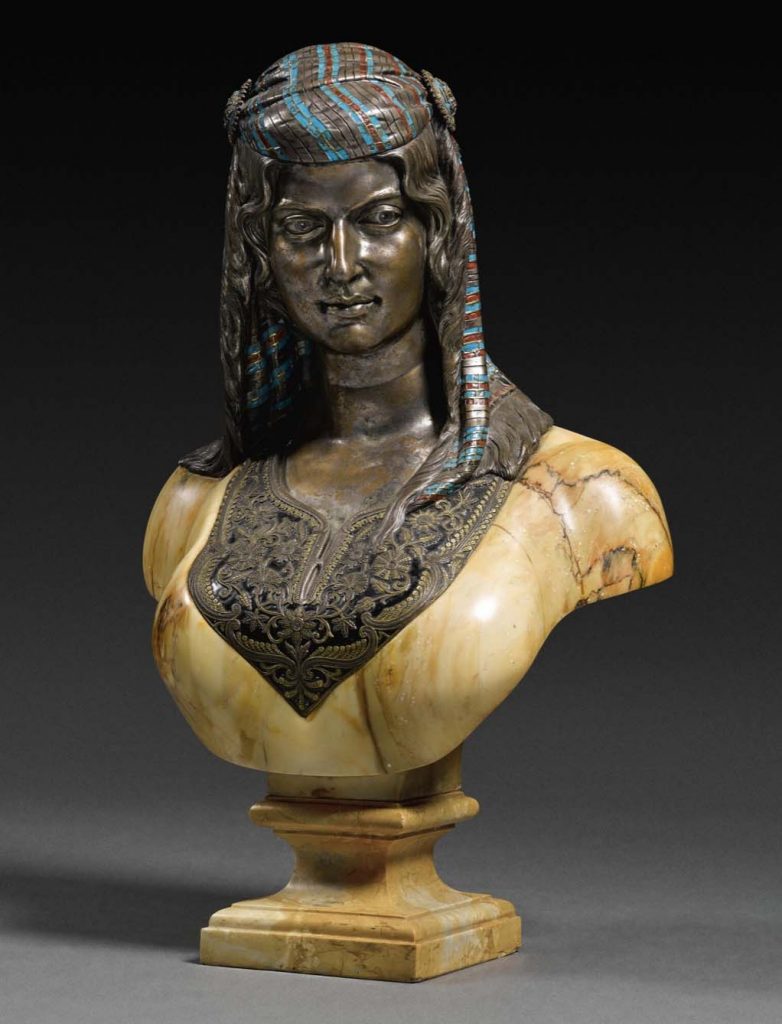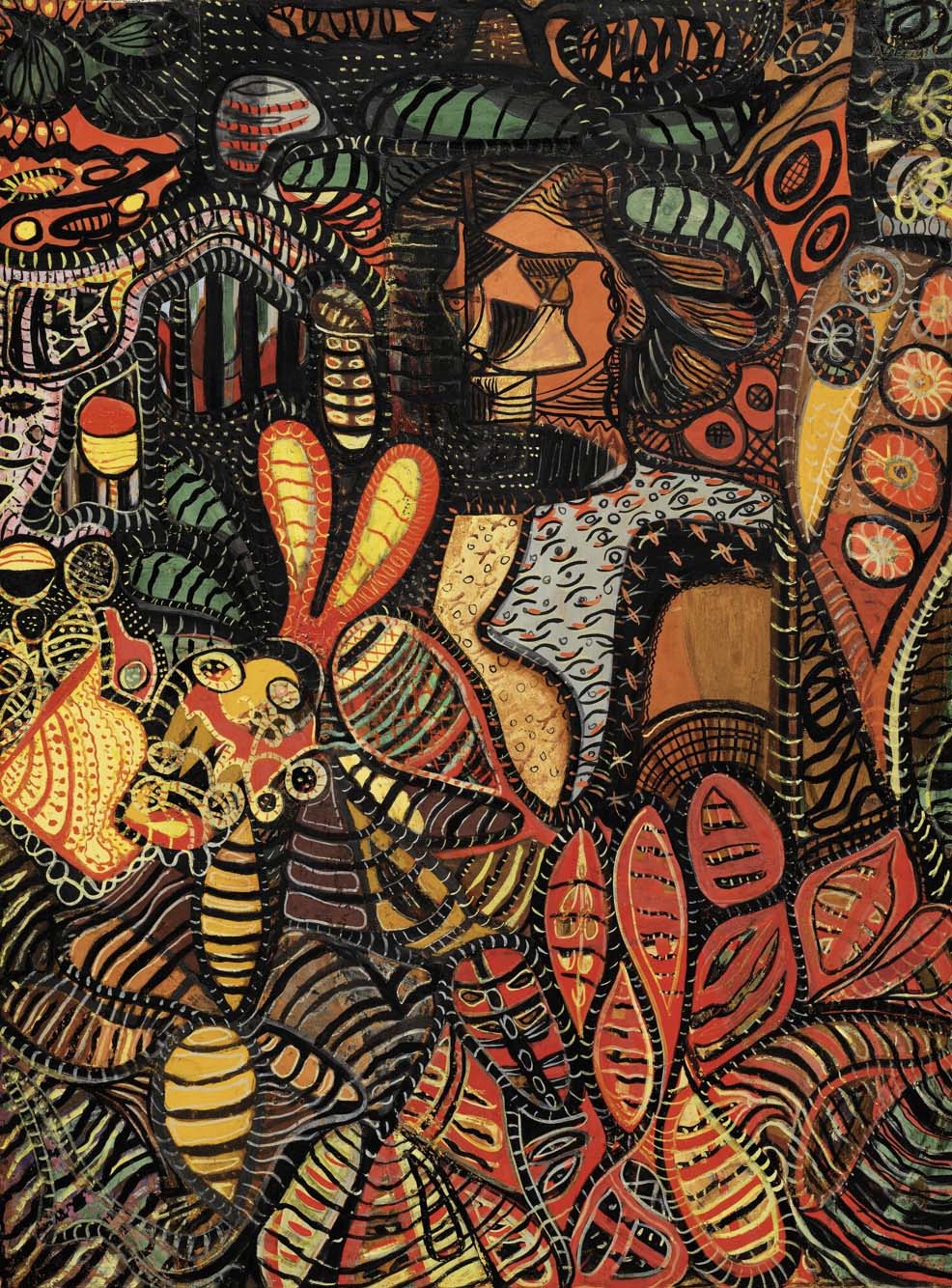THE ARMORY SHOW
To start off, this week marks the start of New York City’s premiere 20 & 21st century art show, The Armory Show.
The Armory Show takes places from Thursday, March 8 through Sunday, March 11 at the Piers 92 and 94 in Chelsea.
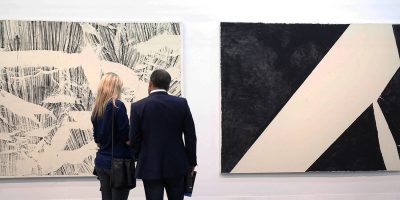
The show exhibits over 100 galleries from all around the World, creating a charming atmosphere in which visitors are invited to discover thousands of artworks spanning movements, mediums and cultures.
In conjunction to The Armory Show, The Museum of Modern Art has on exhibition the art of Tania Bruguera: Untitled Havana, 2000, Thinking Machines: Art and Design in the Computer Age, 1959- 1989, and Tarsila do Amaral: Inventing Modern Art in Brazil in addition to much more.
On view at the Guggenheim Museum, are the shows Dahn Vo: Take My Breath Away, the art of Joseph Albers in Mexico, with a special screening of Jean- Pierre and Luc Dardenne’s filmRosetta (1999) in combination with the Dahn Vo art on Saturday, March 10 at 2:30 pm and 5pm.
Additionally on Saturday, March 10 at 7 pm, The Metropolitan Museum of Art will be presenting a performance by Sussan Deyhim. Through a multimedia concert, Sussan Deyhim will be payingtribute to the late Forough Farrokhzad, the irrepressible feminist poet and filmmaker. Sussan Deyhim combines visual projections, archival footage—including Farrokhzad’s 1965 interview with Bernardo Bertolucci—and an original score, cowritten with Golden Globe–winning composer Richard Horowitz, in this gripping homage. Sussan Deyhim’s vocals can be heard in films such asThe Kite Runner and Argo.
From March 8 to 11, at the Skylight Clarkson Sq, The New Art Dealers Alliance (NADA) will be exhibitingover 50 galleries from all over the world, with some renowned cultural programming. The New Art Dealers Alliance (NADA), the definitive non-profit arts organization dedicated to the cultivation, support, and advancement of new voices in contemporary art.
Hope you are able to catch some of the superb art and programs around New York City this week!
Early each year collectors, curators, and scholars gather in New York City for what has become an annual pilgrimage now known as Americana Week. Although fewer events are planned for the 2018 schedule, the weekend of January 18 – 21 is a deluge of shows, exhibitions, lectures and social events. Those who attend will gain new insight into American history, fine art, furniture and decorative arts. Should your travels bring you to Manhattan this January – here is what you need to know to make the most of your time and plan for the very active weekend.
WINTER ANTIQUE SHOW
Now in its 47th year, The Winter Antique Show offers the best of historical and contemporary design which speak to each other from the booths of over 70 dealers who will offer a well-rounded spectrum of objects from ancient art, Americana, English, Continental, and Asian art, all vetted by 150 specialists.
Highlights of those exhibiting this year include offerings from: Bernard & S. Dean Levy Inc., Ellie Shushan – purveyor of fine portrait miniatures, Gerald Peter Gallery and Hirschil & Adler Galleries. The 2018 loan exhibition, Collecting for the Commonwealth Preserving for the Nation: Celebrating a Century of Art Patronage, 1919-2018, from the Virginia Museum of Fine Arts, will commemorate gifts to the museum from the James W. and Frances Gibson McGlothlin collection including French impressionist, modern, and contemporary works from the collections of Paul Mellon and Sydney and Frances Lewis, examples of Art Nouveau and Art Deco designs, collections of Fabergé, and Russian objects from the collection of Lillian Thomas Pratt, jewelry designed by Jean Schlumberger for Tiffany from the collection of Bunny Mellon, and more.
WAS is open from noon to 8:00 P.M. daily except for Sundays, January 21st and 28th with altered hours on Thursday, January 25th (noon to 6:00 P.M.) and Tuesday, January 23rd (noon to 4:30 P.M.) All WAS proceeds go to the East Side House Settlement in the Bronx. A schedule of daily events and lectures can be found on the show’s website.
https://www.thewintershow.org/
NEW YORK CERAMICS & GLASS FAIR
Dedicated to ceramics and glass – the show presents almost 30 vetted galleries, private dealers, and artists from the United States, Europe, and Israel, who will offer ceramics and glass made from the 17th century through to contemporary works. The loan exhibit at the New York Ceramics & Glass Fair is sponsored by Ceramics in America, published by the Chipstone Foundation of Milwaukee, Wisconsin, and the Museum of the American Revolution, Philadelphia. Archaeologist Deborah Miller will lecture on the significance of a remarkable assemblage of slipware dating to the middle of the 18th century that was found in a brick-lined privy shaft associated with Philadelphia taverns. The fair continues daily from January 18th – 20th from 11 a.m. to 7 p.m. and on Sunday, January 21st from 11 a.m. to 4 p.m.; tickets are $20. The fair’s daily lecture program is free with admission. For the entire schedule please see the fairs website.
Art, Design, & Antiques Show at Wallace Hall
For the fourth year, Brad Reh has assembled 35 well-known dealers to offer a selection of English furniture, American folk art, American Indian art, fine books, silver, pottery and porcelain, Oriental rugs, carpets, jewelry, Asian works of art, paintings, sculpture, and mid-century design in a boutique-like setting. With the loss of Big Flea, the Armory Show and the Pier Show AD&AS at Wallace Hall is a “can’t miss” for those seeking quality decorative pieces from many eras and locations. Highlights will include a dining table and four chairs by Tommi Parzinger offered by Glen Leroux Antiques, Painted Furniture and Country Americana from A Bird in Hand Antiques and a striking mid-century Italian chrome chandelier offered by Andrew Spindler Antiques. Open from Friday, January 19th – January 20th from 10 A.M. – 7 P.M. and Sunday, January 21st from 11 A.M. to 6 P.M. Additionally, throughout the weekend, a shuttle bus will run between Wallace Hall and the Winter Antique Show at the Park Avenue Armory.
OUTSIDER ART FAIR
For the 26th consecutive year the Outsider Art Fair will be offering outsider art from more than 60 national and international exhibitors, nine of which are new to the show. The show is open from January 18th – 21st with daily hours from 11 A.M. to 8 P.M.
http://www.outsiderartfair.com/
Sotheby’s – Americana Week Auction
Sotheby’s will offer nearly 900 lots of American furniture, folk art, silver, China trade porcelain, and prints over a four-day period at their York Avenue location. The star of the week; however, is the Mansfield-Merriam family Pilgrim-century black-painted, joined, and carved oak wainscot armchair, made in the New Haven Colony circa 1650, that will be sold on Saturday, January 20 with an estimate of $300,000-500,000.
On Saturday, January 19th, Sotheby’s will offer a Nathan Lumbard clock in an inlaid case from the Fred and Ann Vogel collection; however, the sale will lead off with furniture from the Dudley and Constance Godfrey Foundation, with the proceeds going to the Milwaukee Art Museum. On Saturday afternoon the collection of Bobbi and Ralph Terkowitz of Washington, D.C., and New York will be offered, which includes five portraits by itinerant painter Ammi Phillips. On Sunday, a collection of federal and classical furniture from the estate of the Michigan collector Patricia M. Sax which was bought in New York from renowned dealers Carswell Rush Berlin and Stuart Feld at Hirschl & Adler Galleries will also be offered.
http://www.sothebys.com/en.html
Christie’s Americana Week Auction
On Friday, January 19, Christie’s will sell Americana and Outsider art, including five works by Alabama artist Bill Traylor. Christie’s will also sell 100 lots of traditional American furniture and silver from a separate catalog. The highlight of Christie’s offerings are two pairs of Philadelphia rococo side chairs made for Richard Edwards that were found in Canada. Three of the chairs have the same descent as a pier table that sold at Christie’s in January 1990 and which set a record price at that time. The chairs will be offered in two lots, estimated between $30,000-50,000 and $20,000-30,000. In addition, a pair of Philadelphia Queen Anne side chairs from the Rawle family hold a $30,000-50,000 estimate. Finally, an Athenaeum-type portrait of George Washington by Gilbert Stuart which was once owned by the hero of Spanish independence Simon Bolivar (1783-1830) of Caracas, Venezuela will be offered and is estimated at $100,000-150,000.
Savy collectors who attend shows and fairs are using art advisors to research artist and markets before jumping into a purchase. Buyers should remain discerning when purchasing via shows and consider the following before purchasing: remove the emotion of purchase, analyze the artist, medium, size, subject matter, rarity, provenance and sales history – it is very important to confirm the sales price at auction as understanding the market of your acquisition is the basis of negotiation. Work with advisors to negotiate the purchase of a new acquisition as advisors can often save clients upwards of 20% on a new purchase. The Fine Art Group Advisors charges $300 for market analytics reports which provides a diagnostic analysis of the quality and market for the acquisition. An additional 5% of the final sales price will be charged for negotiating on the client’s behalf.
Another great year, touring the fair with clients as leading galleries from North America, Latin America, Europe, Asia, and Africa show significant work from the masters of Modern and Contemporary Art, as well the new generation of emerging stars. Paintings, sculptures, installations, photographs, films, and works of the highest quality were on display in the main exhibition hall. Ambitious large‐scale artworks, films, and performances became part of the city’s outdoor landscape.
Selected Highlights
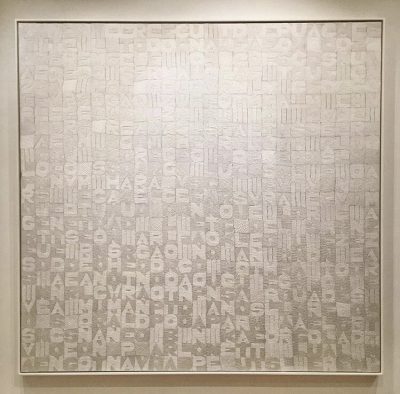

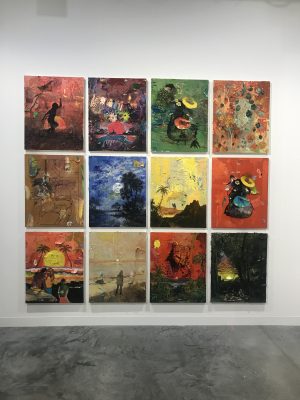
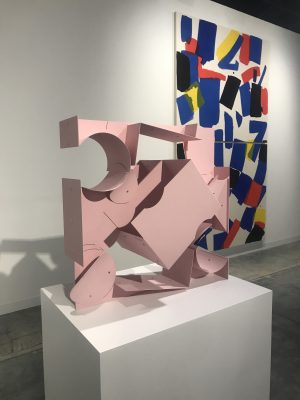
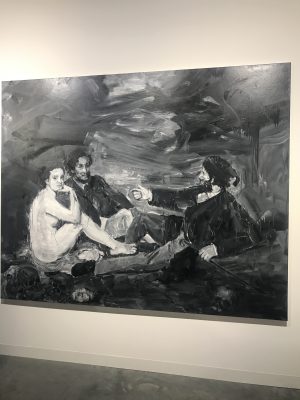
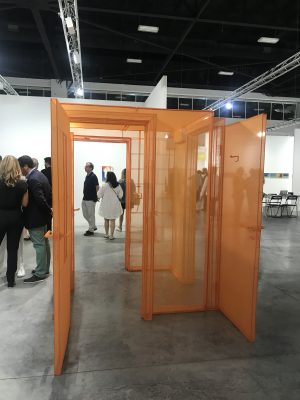
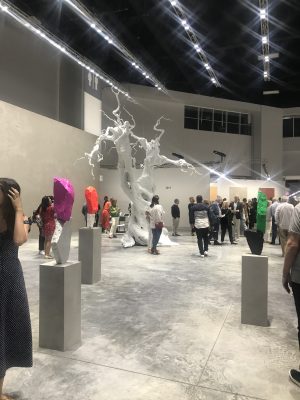
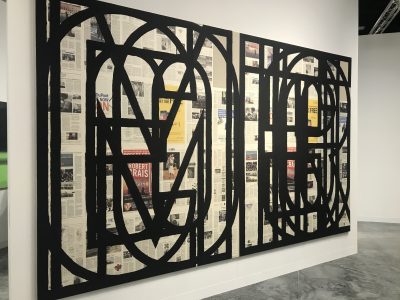
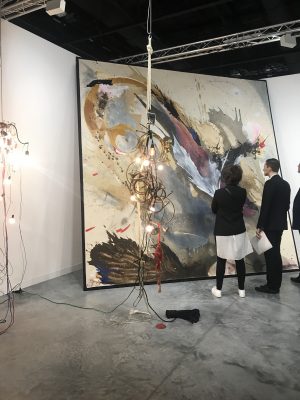
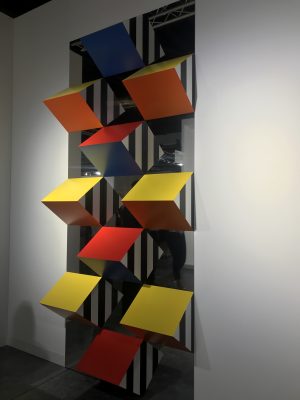
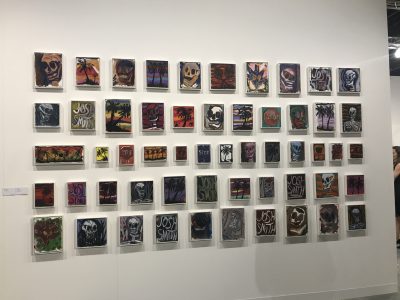

I remember visiting my grandparents’ home on Central Park West. The home was a beautiful mosaic of antiquities, tribal art, period antique English and French furniture, modern paintings, oriental rugs and Tiffany lamps. Although today I visit homes of Billionaires and properties in excess of 25,000 square feet in gorgeous locations, I compare all homes to my grandparents’ two-bedroom apartment in NYC.
A truly elegant home is one that incorporates artwork and objects that stand alone. Paintings chosen because they match the sofa or have a “contemporary feel” are no different from the wallpaper. In conversing with many of my clients who work with designers for their interiors, it has become very clear to me that there is a fundamental lack of understanding of the importance and the process of marrying art and design.
The best designers understand that the fine art needs to be as important as the custom couch and the color scheme of the walls. Many of the architects we work with see the art as an essential component of their architectural vision for the structure. A team approach to designing a home results in the most elegant and appealing homes. When the Art Advisor, Designer, Architect and client work in tandem, magic occurs.
There are certain assumptions about incorporating art into a design project that need to be dismissed. The first and most prevalent is that “real art” is too expensive. How many times have I heard a client say, “I can’t afford real art.” This is the biggest myth of all. Whether the budget is $100,000 or $1,000,000, there are artworks available. Low edition prints by important artists, photography and art work by emerging artists, who show in major galleries and museums, can all be obtained within a prescribed budget.
Many designers are concerned that it is too difficult to find real art that fits a space. In fact, some designers will work with a handful of working artists who are commissioned to create works to fit a space. Every project looks the same because every home has a version of the same art. In addition, none of the commissioned pieces have any asset value. Today, there are so many ways to frame artwork to fit a space. The size of the mat and the frame can alter the size of an art work dramatically.
In addition, artwork that is not purchased for decorative purposes has a much better chance of holding its value over time. Therefore, when it is time to downsize or to alter the design style, you are not getting pennies for the artwork you spent thousands on. I recently compared decorative art work to penny stocks. They rarely increase in value. However, an artist who is part of the cannon of art history, typically holds his/her value or increases.
The last myth I want to dispel is that it is too hard to find real artwork within a design time frame. Just as a professional designer develops contacts to access the most interesting and beautiful textiles and unique pieces of furniture, the expert art advisor has contacts throughout the dealer, private and auction world. At The Fine Art Group, we have experts on staff in all areas of fine art who have deep connections with dealers in that art collecting space. Take the time to find a designer who understands the importance of marrying art and design. The result will be a home that stands the test of time and is a truly elegant and inspirational space.
– Anita Heriot
BARBARA DERCOLE DESIGN
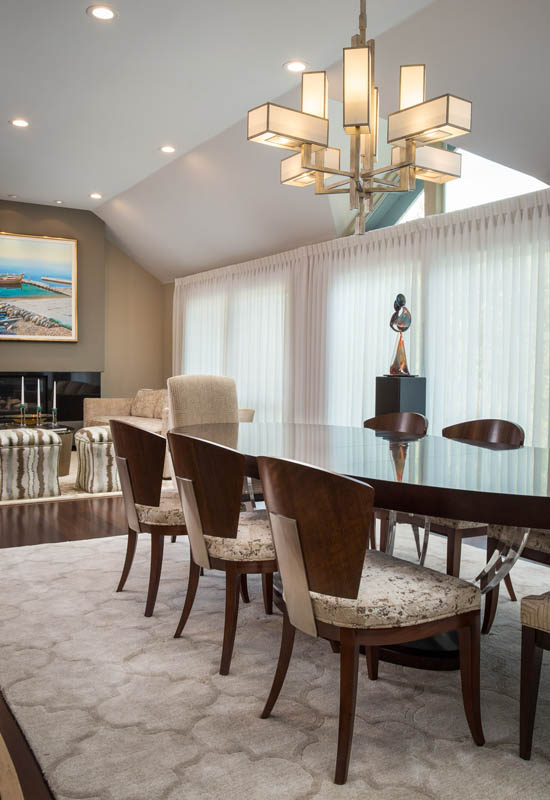
As an interior designer for many years, I have acquired the valuable knowledge of knowing the importance of art in Interior Design. Creating a beautiful space that is cohesive requires some strategic practices that can make all the difference in the final outcome of a space. The style of decor should always complement the art and selecting a palette with that piece in mind will always satisfy. I remember following up on a client who had acquired a collection of art that did not work with the decor or architecture of the home. Through thoughtful design discussions and some small alterations of color, scale and design, the house was given a soul and a direction that guided everyone who entered this story – a story of the art and design of the home which existed where it did not exist before.
Hiring a design professional to help you through this process can make the difference in a room that speaks to you with confidence versus yet another room with art hanging on the walls. Another way to create this confidence is by combining multiple works of art by the same artist or works of art of a similar style. This always creates a greater impact. Working with architects and lighting designers is also a great way to showcase your collection with detail being focused on placement and impact.
If art is important to you, either because of the investment or how it makes you and your family feel at the end of the day, hiring a design professional should be a key component in your design planning.
Barbara Dercole Design
20465 Saratoga Los Gatos Rd.
Saratoga, Calif. 95070
www.barbaradercoledesign.com
As a new wildfire closed part of Interstate 405 early Wednesday near Los Angeles’ Bel Air area, flames sweeping toward the Getty Center arts complex — one of a number of recent fires that have burned more than 83,000 acres, countless buildings and pushed thousands of people to evacuate their homes — the call for preparedness has never been more urgent.

Southern California Fire Evacuation Zones
The map outlines those communities in yellow which should be preparing to evacuate should the fire cross the freeway. The boundaries for the mandatory evacuation zone are Sunset Boulevard to the south, Roscomare Road to the west, and Mulholland to the north.
THE FINE ART GROUP’S PLAN OF ACTION
- Every home should have a complete and detailed inventory of their contents. You will need this information should the fire hit your home.
- It is wise to have an evacuation plan. The Fine Art Group can arrange for a packer/shipper to transport the art to a certified art storage facility should the evacuation be necessary.
- Make sure you have the correct insurance on your contents. If you have a blanket coverage, ensure the number is large enough. If you have pieces valued over your blanket per item limit, make sure you have scheduled and updated values. Our advisors are happy to connect you with excellent brokers who can provide you a full insurance review gratis.
MODERN & CONTEMPORARY WORKS OF ART
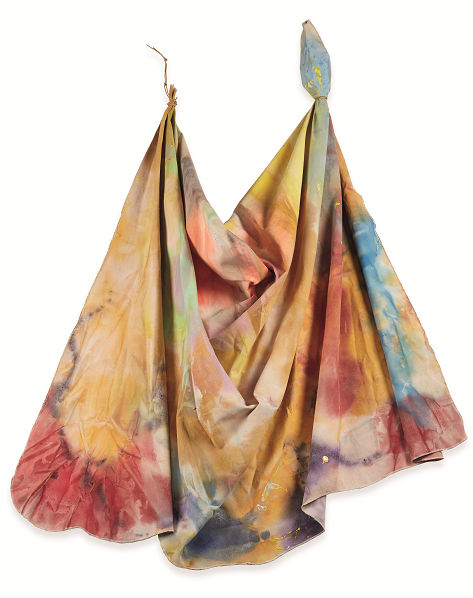
Freeman’s
Lot 99
Sam Gilliam (American, B. 1933)
IDYLLS I
Estimate: $50,000-$80,000
Sold: $370,000 (Hammer with Buyer’s Premium)
19TH & 20TH CENTURY SCULPTURE
Including works from Cecil Howard’s studio
Sotheby’s
Charles-Henri-Joseph Cordier (French, 1827-1905)
LA JUIVE D’ALGER (THE JEWESS OF ALGIERS)
29 ¾ in.
Estimate: £60,000-£80,000
Sold: £248,750 (Hammer with Buyer’s Premium)
RAGO MODERN DESIGN SALE
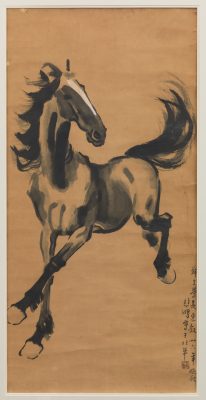
Rago
Xu Beihong (Chinese, 1895-1953)
Galloping Horse
Estimate: $294,000-$411,000
Sold: $710,000
POLY INTERNATIONAL AUCTION CO.

George Nakashima (American, 1905-1990)
NAKASHIMA STUDIO – Fine Minguren I coffee table
Estimate: $20,000-$30,000
Sold: $32,500
OUR SERVICES
Offering expert Advisory across sectors, our dedicated Advisory and Sales Agency teams combine strategic insight with transparent advice to guide our clients seamlessly through the market. We always welcome the opportunity to discuss our strategies and services in depth.
Meet Roxanne Cohen our New Director of Art Advisory
Born and raised in London, Roxanne Cohen comes from an art collecting family. After 30 years in the UK, she relocated to NYC, the center of the contemporary art world. With years of experience as an independent art consultant, Roxanne now brings her skills to The Fine Art Group. For 5+ years, she worked at Christie’s Auction House within the Post-War and Contemporary Art Department and Client Advisory. Her extensive knowledge of the primary and secondary art markets helped clients build unique collections of work by various artists, both emerging and blue chip.
Roxanne has a Masters in Art Business from Sotheby’s Institute which is affiliated with Manchester University, a BA (honors) in History of Art and Architecture from Manchester University (UK), and a Certificate in Collections Management from Sotheby’s Auction House.
BUY WITH YOUR EYES, THEN WITH YOUR MIND
By this I mean, buy what you feel passionate about and then validate the purchase with your due diligence.
Loving the work must be the most important factor. You should take time to develop your eye, research and learn what it is that you love. Visit Museums, Art Fairs, Auction Houses, Galleries and follow people in the art-world on Instagram. Read as much as possible on artists you’re looking at, check their resume for important gallery and museum shows. Did an important collector own the piece you’re looking at? Has it been exhibited before? Have you checked auction results to make sure that you are paying fair market value?
Make sure you see the work in person. Photographs and PDFs can be digitally enhanced. It is also crucial that you have the correct measurements. Make sure your measurements reflect the size with frame. The work does not necessarily need to match an interior but should fit well in the space. Buying art for your home means that you will live with it every day; you don’t want to regret an ill-informed decision.
Looking for a work by an established artist on a lower budget? These blue-chip artists may remain out-of-reach for the collectors with lower budgets but there are more accessible works out there. An artist’s early drawings, studies, print editions for example, represent a good starting point for anyone wishing to own a work by a blue-chip artist. When buying, consider looking for works that capture the most distinct elements of an artist’s practice.
Don’t just ‘buy into the hype’ especially with young emerging artists. If you do, make sure you will love the work in the long run, as the emerging market can be very volatile.
It’s also important to buy quality not quantity when investing in art. Invest in fewer pieces that are higher quality. Art is a purchase for life, so it’s better to collect slowly with a focus than try to rush.
An art advisor can be used along the entire spectrum of the collection process – from early days when a simple educated walk through a fair may be a great start, to pricing works before acquisitions, to developing a comprehensive collection management strategy. Having a trusted advisor to work with can be a major benefit as they know you, your taste and are committed to building your collection with your values in mind.
OUR SERVICES
Offering expert Advisory across sectors, our dedicated Advisory and Sales Agency teams combine strategic insight with transparent advice to guide our clients seamlessly through the market. We always welcome the opportunity to discuss our strategies and services in depth.
WHEN ARE VALUABLE OBJECTS CONSIDERED APPRECIATING ASSETS?
How does the expanding global art market affect the value of fine art, collector cars, memorabilia, wine, silver, jewelry and other collectibles owned by clients?
What factors influence the value of objects?
During the past several years, fine art and collectible markets have been in a continuous state of evolution expanding into new countries and to new purchasers across the globe. Due to the increased number of international buyers, tastes and desires have broadened. As a result, the value of fine art, jewelry, vintage cars and collectibles have fluctuated tremendously over the past decade due to changes in consumer demand. Many personal collectors remain unaware of the value changes and as a result, their personal assets are not adequately protected nor managed.
This presentation will educate you on the state of the art and collectible markets. You will also develop an understanding of the importance of planning for and insuring a client’s valuable tangible assets.
WHO SHOULD ATTEND
- All Legal Professionals
- All Certified Financial Planner
- All Certified Public Accounts
SPONSOR CERTIFIED FOR CFP, CPA, CTFA & CLE ACCREDITATION
Class Time: 1 Hour Course Offering
Sample Class Offering for Unlocking the Potential of Hidden Wealth: Managing Tangible Assets
This presentation will educate the wealth community on the state of the art and collectible markets.
The wealth community will also develop an understanding of the importance of planning for and insuring a client’s valuable tangible assets.
The major themes of the course include:
- How the expanding global art market affects the value of tangible assets
- Understanding how value is determined and the appraisal process
- Using Art as Collateral
- IRS guidelines and tax implications for tangible assets
- How to monetize tangible assets and increase assets under management
- Understanding risk management strategies for tangible assets
PRESENTERS
- Colleen Boyle, Senior Vice President
- Anita Heriot, President
- Kate Molets, Director of Appraisals
My wake-up call to the fires in Napa and Sonoma Counties happened one morning as I drove from my weekend home in Gold Country into the little town of Sonora where I do my daily shopping. The skies were overcast with a haze that reminded me of the rim fires of some years ago. The air smelled of smoke. I turned on the local radio station in fear of a local fire, only to hear that this was, in fact, the effect of a fire four hours away from my home in Sonora. As I drove to my primary residence in Silicon Valley, the haze became worse and the smell of smoke intensified. It seemed illogical to an east coaster like myself that the effects of smoke and fire could be experienced in areas two and three hours from the localized fire. Once I returned to Silicon Valley, the emails started coming in canceling outdoor activities. With information pouring in about iconic wineries and homes being engulfed in fire, I reached out to our clients who I knew had homes in Napa and Sonoma. I had personally valued and assisted in the collection management for some of these clients and I knew the quality of the collections. I started thinking of the wonderful Monet on the wall of one of my clients and the story he told me of how he and his wife purchased the piece on their first trip to Paris. Millions of dollars of art was hanging on the walls of my clients’ homes in Napa and Sonoma.
Calls did come in and I began the work of saving the art.
Each trip into the smoke filled skies of Napa and Sonoma were reminders of why I do my job. My work as a tangible asset manager, advisor and appraiser can be summarized by two principal missions: valuation and protection of our clients’ most treasured objects.
On the Tuesday of the fire, a broker called me to let me know that one of her clients purchased a home that included the previous owner’s art collection. They did not have paperwork on the art and were not sure of the art’s values. However, they wanted to make sure the collection was appraised and taken out of the home. I traveled to Sonoma with an art packer and shipper. As I went through the home, pointing to the pieces that needed to be extracted out of the home, I quickly deduced that several of the pieces were valuable; most notable was a work by a pre-eminent African American artist. The work was hanging in the study and I valued it at $325,000. Had the work not been valued, the client would have received no more than the blanket coverage of $10,000 for a loss. However, the broker, the client, my administrative staff and I worked as a team and we were able to provide an appraisal within one hour of being on site. The broker quickly added the piece to the insurance schedule and the work was accurately insured. When each team member works in synchronicity with the goal of protecting the client, we always win.
Another client in Napa reminded me of the deep relationship we have with the objects we own. I received a call from an insurance broker who asked that I reach out to his client in Napa. It was late in the afternoon and the night before the fire had reached the hill behind their home. Their home is a magnificent turn of the century structure. It is an icon to the origins of settlement in Napa. However, the owner was not concerned with the objects of value. He was most concerned about a small group of humble antiques that he had inherited from his grandmother. His question to me was, “could we send someone that evening to Napa to pack and ship the pieces to a safe art storage facility?” We whipped into gear and arranged for the packing and pick up that evening. The concern in the client’s voice that he may lose the modest side table or the American antique chest reminded me how important these objects are to our clients. It was so gratifying to be able to help ensure that his family’s antiques were saved and it reminded me that monetary value alone is not always the motivation for action around tangible assets.
We are all resting more comfortably as the fires have ceased and the work of rebuilding has begun. However, it is still essential that everyone is prepared in advance of the next natural event.

KEY WILDFIRE PREPAREDNESS TIPS
Marsh | Private Client Services
- Prepare Your Family: Design an emergency plan and discuss it with your family before wildfire strikes. Encourage each household member to assemble a “go bag” — a collection of necessary items in case of evacuation.
- Prepare Your Home: Regular home upkeep, such as clearing your roof and gutters of leaves and debris, is the most effective defense against wildfire.
- Prepare Your Property: Firefighting experts and other authorities urge homeowners in wildfire-prone areas to create a zone of defensible space around your homes to reduce the chance of ignition from radiant heat or embers and to provide firefighters a clear area to operate.
- Prepare Your Art Collection: Appoint a trusted insurance advisor who can assist you with appropriate fine art risk management practices and help ensure your items are properly protected. Document your collection with current valuations in accordance with the international Object ID Checklist standard created by the J. Paul Getty Trust, and keep it in an off-site safety deposit box. Create an emergency evacuation plan that prioritizes your items and specifies where and how each piece will be moved.
A rediscovered masterpiece of Cuban modernism
Amelia Peláez (1896-1968)
El Jardín
Gouache on paper
51 1/5 × 37 4/5 in.
Estimate: $400,000-$600,000
Sold: $375,000
FROM THE CATALOGUE
Amelia Peláez is the most extraordinary example of how vigorous artists should approximate modern art currents in Paris.
– David Alfaro Siqueiros, July 1943
A rediscovered masterpiece of Cuban modernism, El Jardín (1943) radiates with Baroque intensity. Painted in Havana in the early 1940s, a time of relative political and economic prosperity, the work is an outstanding achievement of Latin American modern painting. Depicted in the artist’s signature style, El Jardín resonates through a rhythm of curvilinear outlines and pulsating arabesques set against a structured space of impassable zig-zag patterns. No other work by the artist presents a richer mosaic of tropical color and exotic vegetation.
A key figure of the Cuban avant-garde—and the only woman included in the seminal exhibition Modern Cuban Painters at the Museum of Modern Art in New York in 1944—Peláez constructed her own brand of Cubism: a formal vocabulary of elaborate ornate elements derived from nineteenth century Cuban architectural decoration and furniture design. As was often the case with women artists working in the late nineteenth and early twentieth centuries, Peláez found rich inspiration in her immediate environment: the intimate realm of her family home and garden were not only easily accessible but also suitable habitats conforming to the proper role of women in a predominantly conservative society. It was there, in the privacy of her luscious garden, that the artist found herself surrounded by colorful “…red ixoras; queen’s wreath with violet, purple, and blue flowers; crape myrtles and aralia; or the hibiscus which offers itself in red, cream, yellow, salmon, solferino and hybrid… there were also geraniums, begonias, frangipani, jasmine, orchids; lots of ferns, elephant ears and areca palms.” (1)
Along with her Cuban counterparts Mario Carreño, Mariano Rodríguez, and René Portocarrero, Peláez understood the symbolic power of colonial architecture as a referential sign, one that could adequately testify to the cultural autonomy of its people, or their cubanidad. While most of her work from this seminal period retains certain architectural references, El Jardín appears to be an exception: by purposely distracting our attention with an all-over composition, the viewer is prevented from isolating a single element. Instead, all reference to reality is replaced by elaborate and fantastical patterns that deviate from floral to organic form.
Eventually the eye finds refuge in the indiscernible figure of a woman located in the upper half of the composition. Abstractly depicted in a mask-like face, she is practically concealed by the overwhelming vegetation that surrounds her, as if nature itself were purposely obscuring her presence and purpose. An intensely powerful composition, the work oscillates between excess and restraint, liberation and control. El Jardín is a triumph of painting built on visual contradictions resolved by the artist’s mastery of color and paint.
OUR SERVICES
Offering expert Advisory across sectors, our dedicated Advisory and Sales Agency teams combine strategic insight with transparent advice to guide our clients seamlessly through the market. We always welcome the opportunity to discuss our strategies and services in depth.
(1) Fernando G. Campoamor, “La obra viva de Amelia Peláez,” Bohemia, n.d, pp. 47-52.
